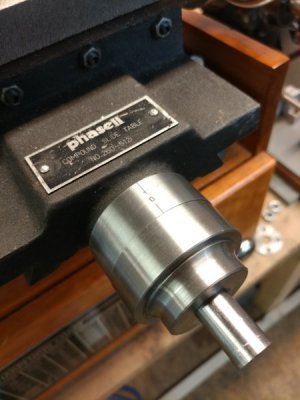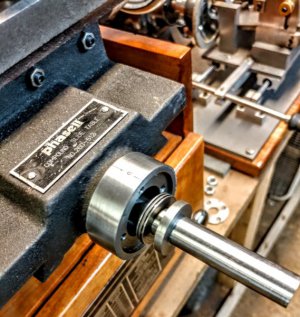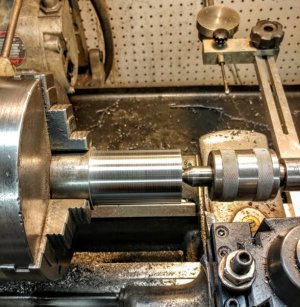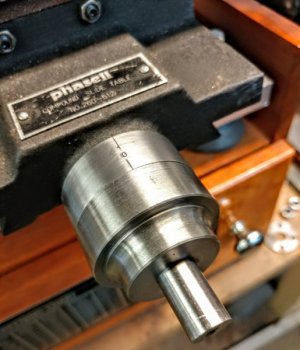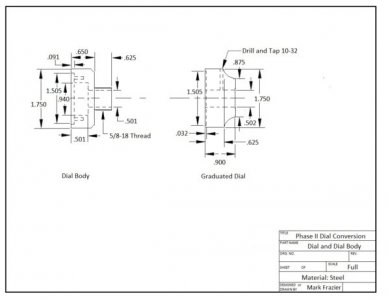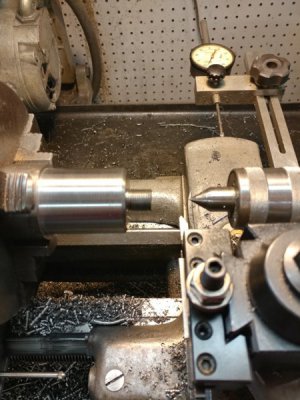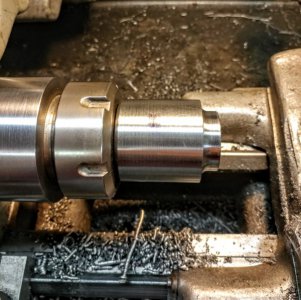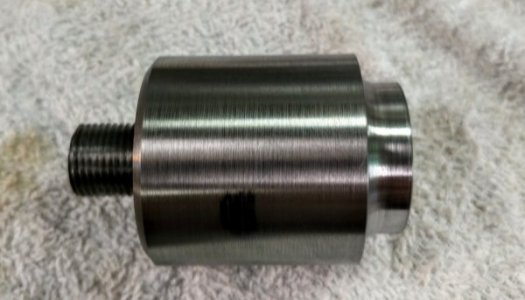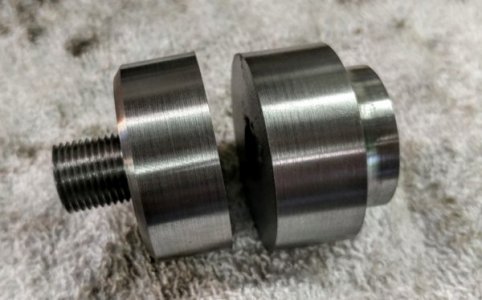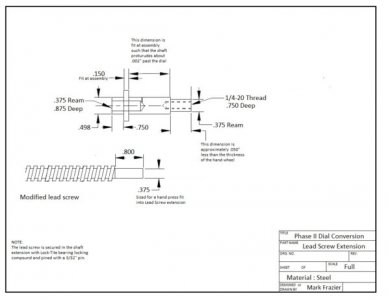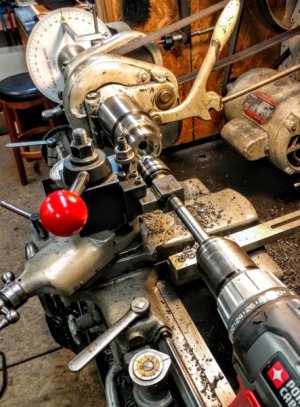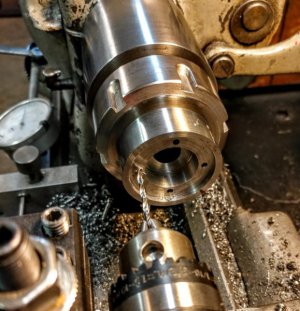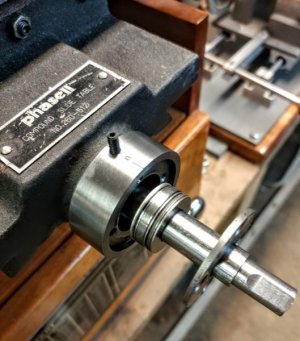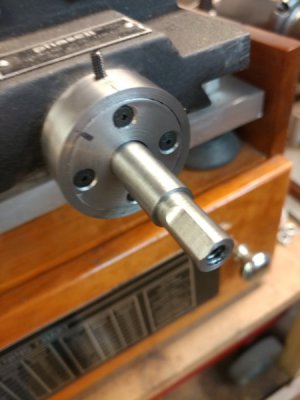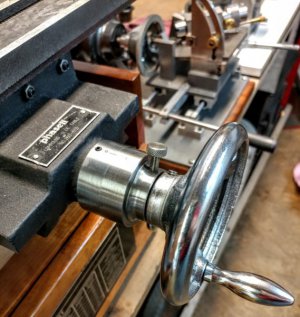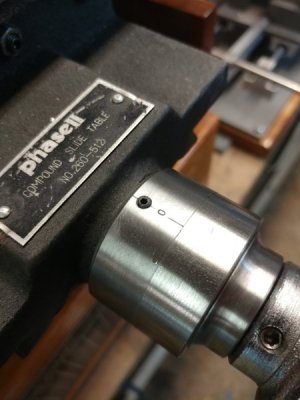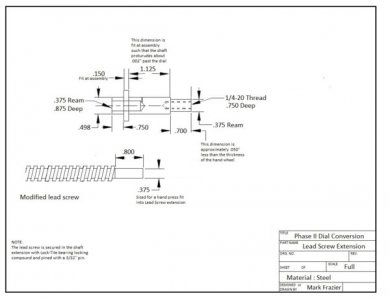I used a Phase II XY table when I built my Tool & Cutter grinder. While it is a decent positioning table, It is (like most of these) far from a precision piece of equipment. The mounting for the screw assembly and handles is poor quality and there is too much back lash to suit me. I plan to upgrade my South Bend lathe dials to large dials and realized the same setup can be adapted to the Phase II table and make it greatly improved. The new assemblies with roller bearings and hand wheels instead of those cheap little handles will make it smooth operating and very little back lash, thus making the quality of my machine greatly improved.
I have re-drawn the prints for the South Bend setup to work on the Phase II table.
The first part to make is the body that holds the roller bearings and screw shaft.
This is the updated print for the body and dial
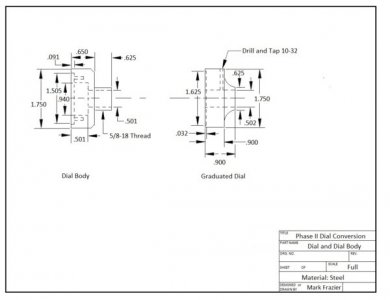
This table is practice for doing my South Bend lathe.
The body was roughed machined from 2" diameter Cold Finished steel. After the body was machined to the finished O.D., the center bore is drilled and reamed to .5000", and the counter bores are done in one setup to make sure everything is concentric. The piece is sawed to length and the rear side is machined leaving .020" for finishing. The piece is then super glued onto a piece of .500 drill rod and mounted in a collet on the lathe as in the photo below and finished to size, then threaded 5/8-18. This was done to ensure the concentricity of the bore to the mounting threads.
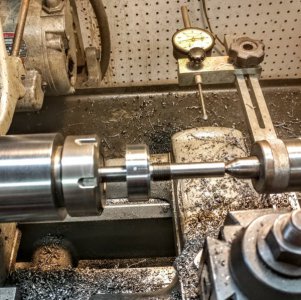
While in this setup, the zero mark is engraved and a pin hole is drilled for a pin wrench to install the body in the table.( in the photo, I engraved the zero mark to the wrong side of the body. This is an easy fix and will be corrected).
The hole in the front of the Phase II table where the screw mounted just happened to be the right size for a 5/8-18 tap, so after tapping the table and the body is all machined and threaded it is check for fit in the table
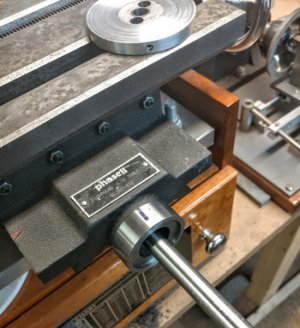
. The rod is still super glued into the body and the body is tightened into place, the place for the zero mark is located and also the place for the pin wrench hole.
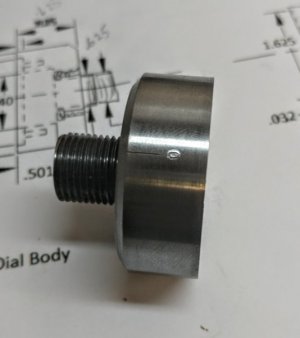
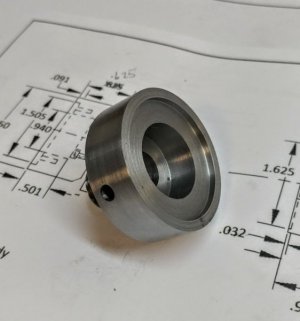
The next step is to finish the body by drilling the holes to mount the retaining plate that holds the bearings in place. It is a round plate 1.500" diameter and about .100" thick. The plate is made by chucking a piece of 1.50" CR steel in the lathe, facing the end and drilling .50" into the piece with a 1/2" drill. Then a thin slice is sawed of in the band saw. There are many ways to drill the plate and body. I put the body in a 5/8"collet in the lathe and used my cross drilling fixture to drill the plate and body together. The holes are tapped 4-40 .375 deep. the screws are flat head screws. The assembly is put in the lathe and the sawed surface is faced flat and even with the body.
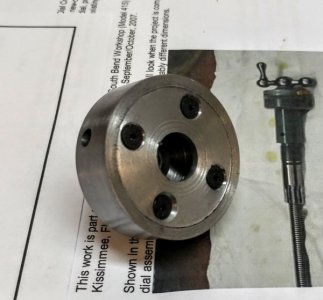
This is the completed body. You can see the hole for the pin wrench.
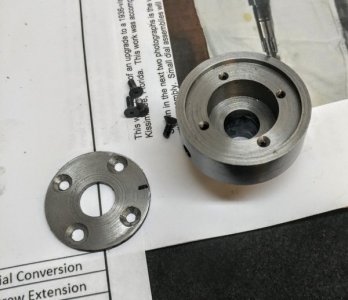
The body parts
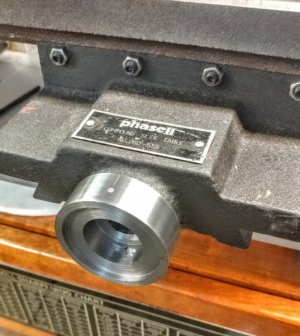
The body mounted in the table.
The next step will be to make the screw and fit it to the body and bearings.
More to come...............
I have re-drawn the prints for the South Bend setup to work on the Phase II table.
The first part to make is the body that holds the roller bearings and screw shaft.
This is the updated print for the body and dial

This table is practice for doing my South Bend lathe.
The body was roughed machined from 2" diameter Cold Finished steel. After the body was machined to the finished O.D., the center bore is drilled and reamed to .5000", and the counter bores are done in one setup to make sure everything is concentric. The piece is sawed to length and the rear side is machined leaving .020" for finishing. The piece is then super glued onto a piece of .500 drill rod and mounted in a collet on the lathe as in the photo below and finished to size, then threaded 5/8-18. This was done to ensure the concentricity of the bore to the mounting threads.

While in this setup, the zero mark is engraved and a pin hole is drilled for a pin wrench to install the body in the table.( in the photo, I engraved the zero mark to the wrong side of the body. This is an easy fix and will be corrected).
The hole in the front of the Phase II table where the screw mounted just happened to be the right size for a 5/8-18 tap, so after tapping the table and the body is all machined and threaded it is check for fit in the table

. The rod is still super glued into the body and the body is tightened into place, the place for the zero mark is located and also the place for the pin wrench hole.


The next step is to finish the body by drilling the holes to mount the retaining plate that holds the bearings in place. It is a round plate 1.500" diameter and about .100" thick. The plate is made by chucking a piece of 1.50" CR steel in the lathe, facing the end and drilling .50" into the piece with a 1/2" drill. Then a thin slice is sawed of in the band saw. There are many ways to drill the plate and body. I put the body in a 5/8"collet in the lathe and used my cross drilling fixture to drill the plate and body together. The holes are tapped 4-40 .375 deep. the screws are flat head screws. The assembly is put in the lathe and the sawed surface is faced flat and even with the body.

This is the completed body. You can see the hole for the pin wrench.

The body parts

The body mounted in the table.
The next step will be to make the screw and fit it to the body and bearings.
More to come...............

